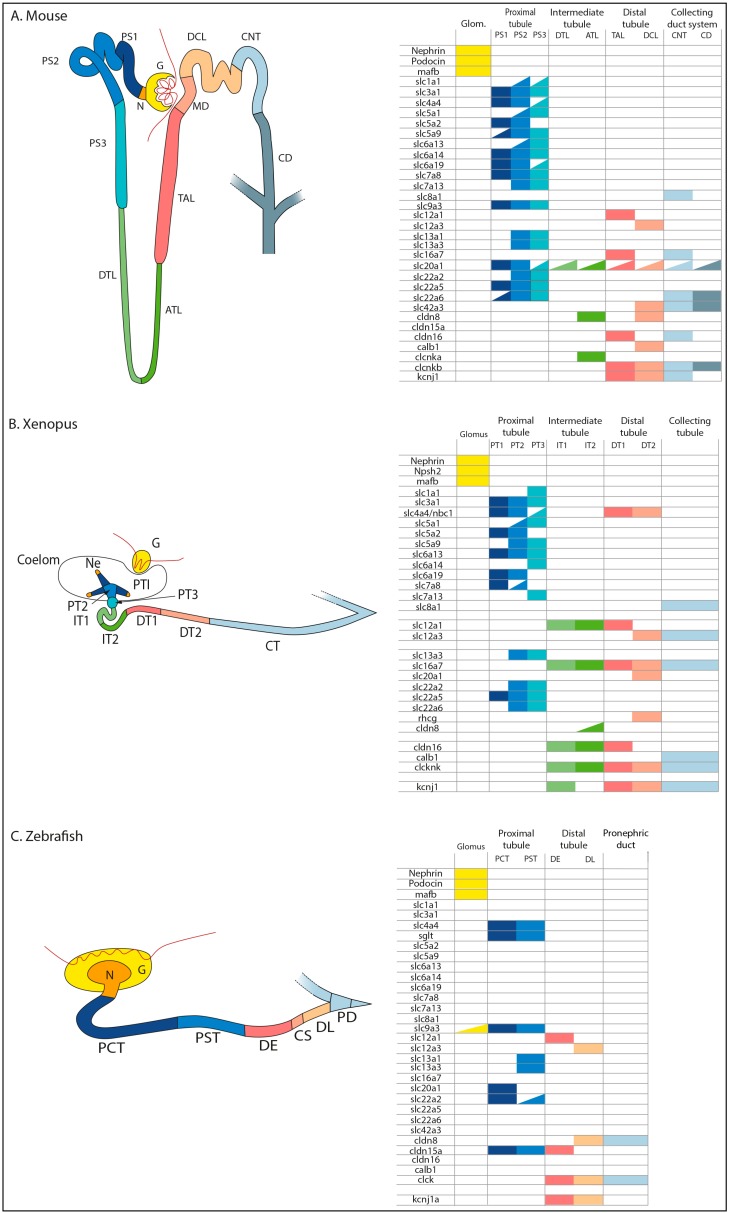Figure 2.
Nephron segments and table of expression of marker genes. The different segments are depicted schematically with different colors showing the co-expression of selected markers in different segments in mature mouse/mammalian metanephric kidney (A), Xenopus pronephros (B), and zebrafish pronephros (C). Mature nephrons are observed from E16.5 in mouse, from 60 hpf in Xenopus pronephros and from 40 hpf in zebrafish. Segment names are abbreviated as follows: in mouse, G: glomerulus; N: neck; PS1, PS2, and PS3: segments of the proximal tubule, DTL: descending thin limb, ATL: ascending thin limb; TAL, thick ascending limb, MD: macula densa, DCT: distal convoluted tubule, CNT: connecting tubule; CD: collecting duct; in Xenopus, G: glomus; Ne: nephrostomes; PT1, PT2, and PT3: segments of proximal tubule; IT1 and IT2: segments of intermediate tubule; DT1 and DT2: segments of distal tubule; CT: collecting tubule; in zebrafish, G: glomerulus; N: neck; PCT: proximal convoluted tubule; PST: proximal straight tubule; DE: distal early; CS: Corpuscule of Stannius; DL: distal late; PD: pronephric duct. Yellow: glomerulus (in mouse and zebrafish) or glomus (in Xenopus); orange: neck (in mouse and zebrafish) or nephrostomes (in Xenopus); blue: proximal segments; green: intermediate segments; pink: distal segments; gray: duct. Half colored boxes indicate low expression.

